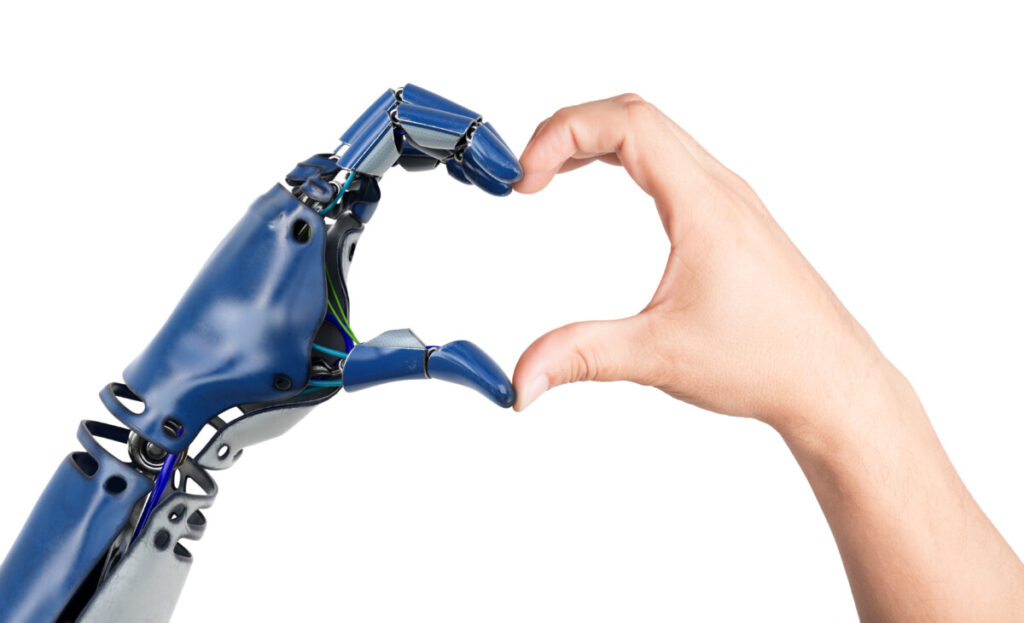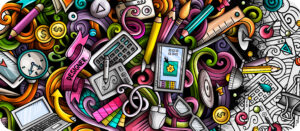
Any human capability tends to decline with lack of use. Our capacity for creativity, which is essentially the ability to have a wholly original thought, is no different. If we don’t exercise it, we fall out of the habit of exercising it, and we eventually lose the confidence and know-how to do so. The age of Artificial Intelligence (AI) that we are entering is a critical moment for creativity – because the opportunity to neglect it has never been greater, but the rewards of exercising it have never been greater either. They apply in my profession of marketing – but also across every other area of business and professional life.
Creativity versus efficiency; determined originality versus the obvious output: these are choices that we make in any walk of life, and they’ve always involved trade-offs. We can push ourselves to challenge conventional thinking when we find that we’re following it; we can plunge into rabbit holes of alternative ways of looking at things; we can create the time and space to think creatively without a set-down process to guide us. However, these things require time – and a willingness to accept that the results aren’t always certain. It will almost always appear more efficient to take the mentally less taxing option, draw the obvious conclusions from the inputs that we’re given, and think in linear ways where one idea leads predeterminedly to another.
The most successful businesses and the most fulfilled people have always known how to balance these two types of thought. One way of thinking saves us time; it’s efficient. The other differentiates us, takes us somewhere new, and unlocks competitive advantage. When it works, it’s far more effective.
When efficiency starts to look like creativity
The critical change that AI brings to professional life is automating the efficient side of things. The danger is that we mistake this for automating the creative side that accesses new levels of effectiveness. As machine learning advances, AI systems will be able to draw conclusions from data in ways that we won’t be able to match. Not only will they be faster, but they will have access to a broader range of data sets, and they’ll be able to think increasingly laterally about which of those sets are relevant. They’ll come to conclusions that we wouldn’t have thought of. It will look a lot like creative thinking. However, it won’t be.
For an example of efficiency looking like creativity, take Lexus – the brand behind my favourite AI-powered advertising campaign so far. The brand was out to prove a point by launching its AI-powered ES model with an ad created by AI – and so it fed an algorithm with data on the characteristics of the most effective auto and luxury ads, asked it to come up with a script – and then filmed the results. The ad that this process produced was pretty decent – and unexpected in the way that it approached the subject. It looked and felt creative – until that is, you compare it to something that results from a genuine leap in human thinking.
Tide recently won the American Grand Effie for advertising effectiveness for a Super Bowl campaign built on the idea that any ad featuring clean clothes is really an ad for the leading laundry detergent. It subverted the very structure of TV advertising, broke third and fourth walls all over the place, used observation, irony and shared experience to spectacular effect – and delivered results on a completely different level. That’s what human creativity can do. It’s not incremental (as in the process for producing the Lexus ad). It’s free to break the rules because of a far deeper understanding of what makes things tick.
How human creativity can be different to incremental AI thinking
Human creativity draws on sensory experiences that machines don’t have, emotions that they can’t feel, empathy that they are by definition incapable of, and shared cultural inferences, codes and understanding that they are not party to. It’s exponentially more capable of responding in ways that are different, unpredictable – but highly effective because they are attuned to what matters. As automation advances, the future for any professional and any employee, has to involve leveraging these unique capabilities in ways that add value. Taking the insights that AI gives you, and doing something with them that AI would never think of.
You don’t have to work in advertising for this to be the case. Take customer service or sales. Yes, it’s true that AI can deliver increasingly natural interactions via chatbots or conversational systems. Yes, it’s true that data and insight help to automate and scale a growing proportion of the sales process. Yes, it’s true that AIs can now even imitate human expressions to the point of persuading someone at the end of a phone that they are talking to a human being. However, these efficient impersonations of human interaction will always lack the scope for on-the-spot creative thinking that businesses rely on. They can’t detect changes in the subtle signals that others send, empathise with what those changes signify, and draw on a well of shared cultural experience to know the right thing to say next. They can’t take conversations in wholly unexpected directions that unlock opportunity through forming human connections. These are creative skills. Businesses lose control of revenue and customer experience when they neglect them.
And neglect them they might well do, because the fact is that businesses often struggle to value creative thinking. They’re suspicious of it precisely because it’s so difficult to reduce down to a series of predetermined steps that an organisation or an algorithm could easily follow. Design Thinking is one of the hottest topics in management consulting because consultants have recognised that creative design is an essential source of competitive advantage. They’ve responded by seeking to integrate such creativity into other aspects of business – by codifying it, and defining it as a process with steps that creative people should follow. A growing number of designers are pushing back against this – recognising it as eliminating the potential for original thinking that it’s intended to support.
As AI advances, there will always be a temptation to sideline creativity as unnecessarily messy and inefficient. In work and life, we face significant peer pressure to think the obvious thought, come to the same conclusion as everyone else, and move forward without rocking the boat. However, doing so, will increasingly result in undermining the value that we have to offer. It’s difficult to remember how to be creative once you’ve forgotten.
The onus is on ourselves to elevate our roles in ways that enable creative thinking to play a part. That’s true whether we’re working in HR, sales, customer service or marketing, whether we’re tasked specifically with innovation or not. This isn’t a case of pushing back against efficiency and automation. It’s a case of taking the time and space that efficiency creates – and pushing ourselves to do more with it. If we settle for the obvious answers that algorithms give us, we’ll be settling ourselves out of a job. As a human being, there is always an opportunity to consider alternatives, to think differently, to be yourself.
Time is running out to get serious about creativity
However, the onus is equally on businesses and their leaders to find the value in creativity and incentivise creative thinking at all levels. Their future competitiveness depends on doing so just as much as it depends on efficient, data-driven AI.
Look at voice search, for example. At first, marketers have tended to respond to this new technology by focusing on finding voice-friendly ways to deliver the same content and messages that they always have. The exciting stuff will only start to happen when they think creatively about what the experience of speaking to a brand should be. There’s massive opportunity space here – but it will require leaps of imagination to take advantage of it.
Plenty of businesses are talking about digital transformation at the moment – but as Tom Goodwin argues in Digital Darwinism, most are approaching it in an inherently incremental way. True self-disruption involves thinking outside of a business’s current data set, thinking beyond what’s worked for a sector in the past – and even what’s working for it now. It involves an inherently creative approach to organisational design – informed by data, but accepting of the fact that the future will look very different to the past.
AI may be the future. But the future is always best navigated by creative minds. At this moment in time, we can’t afford to neglect our own.






